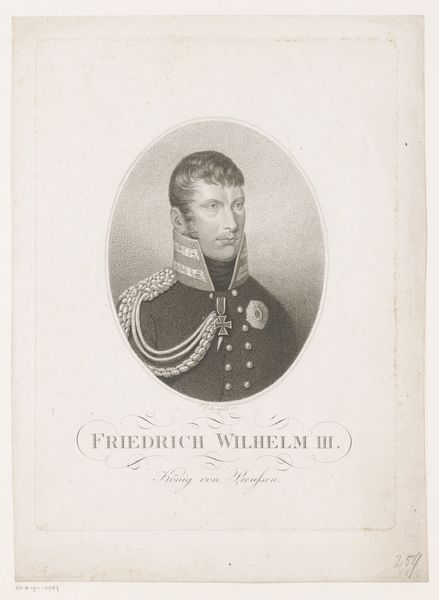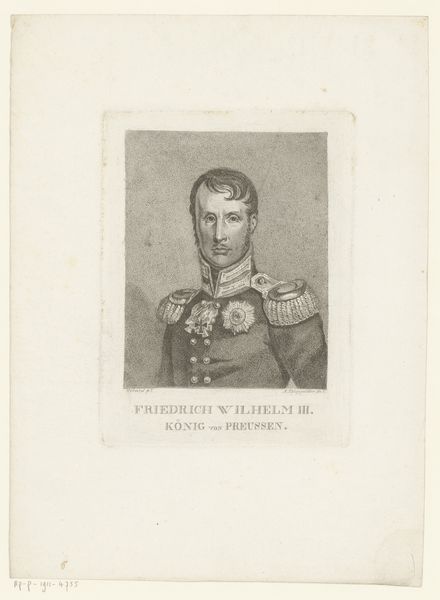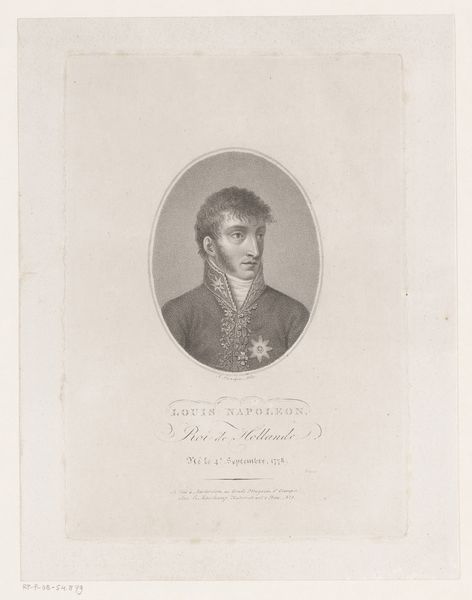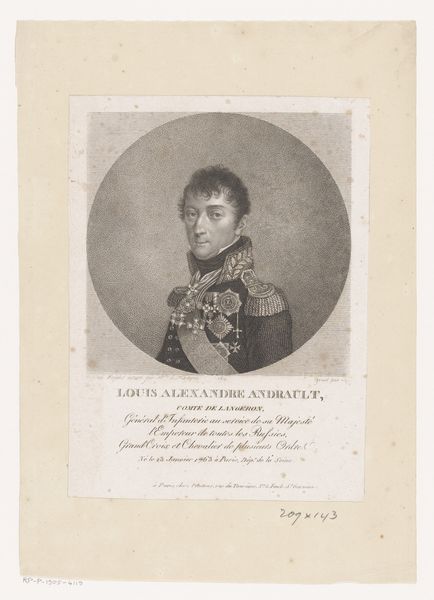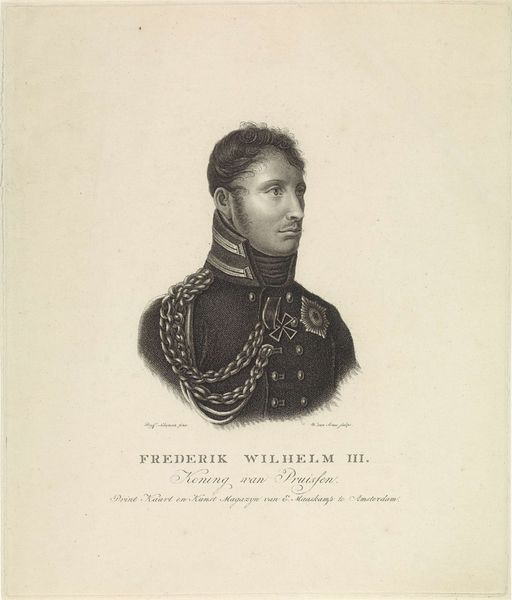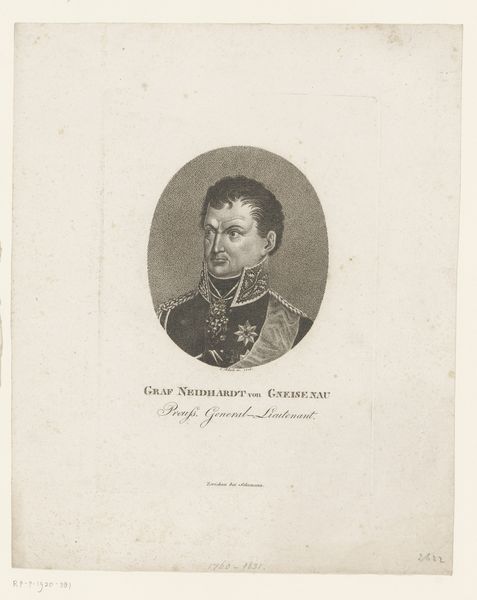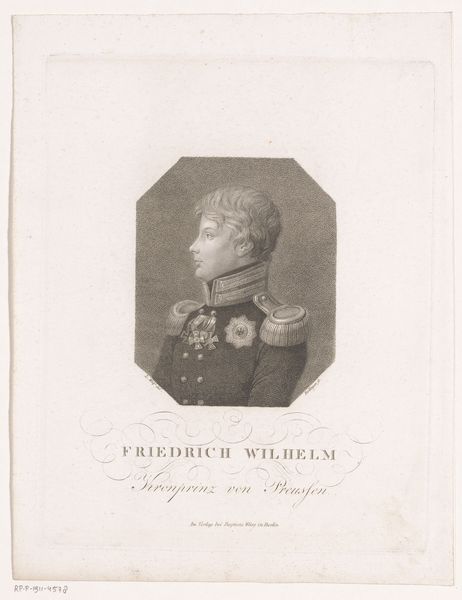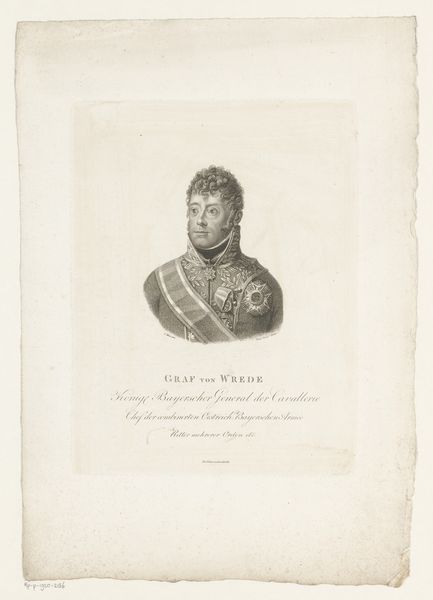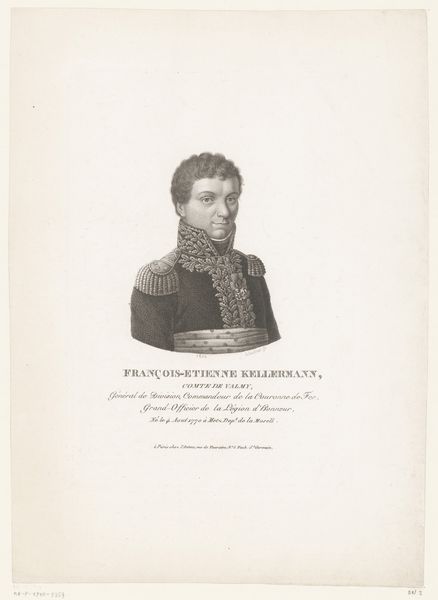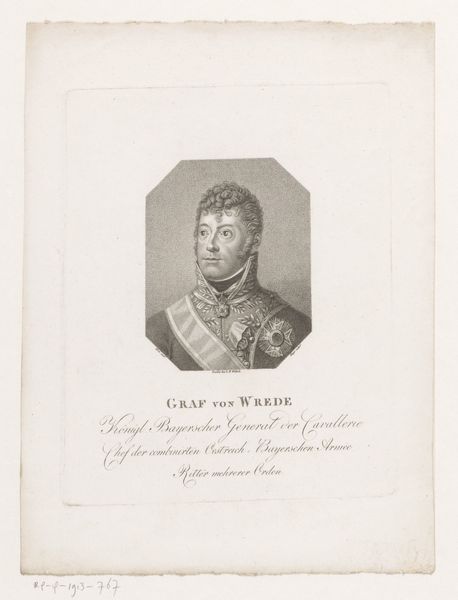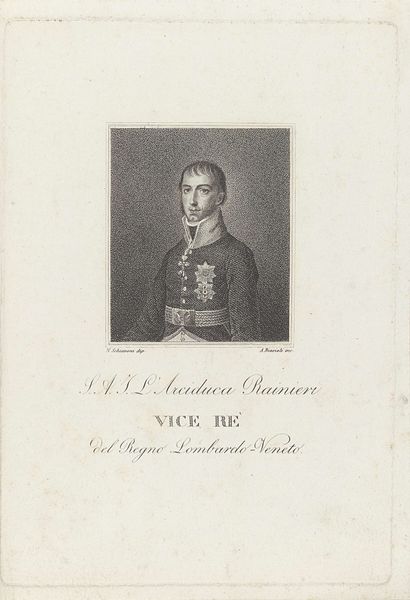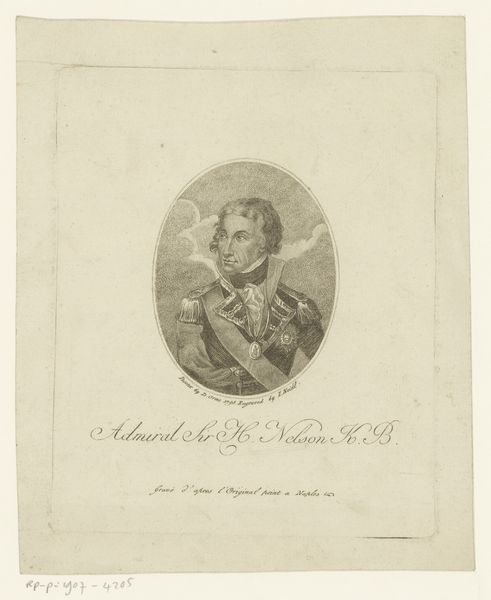
Portret van Friedrich Wilhelm III, koning van Pruisen 1797 - 1828
0:00
0:00
print, engraving
#
portrait
#
neoclacissism
# print
#
engraving
Dimensions: height 160 mm, width 104 mm
Copyright: Rijks Museum: Open Domain
Curator: Here at the Rijksmuseum, we're standing before a portrait of Friedrich Wilhelm III, King of Prussia. This print, an engraving, was created sometime between 1797 and 1828 by Friedrich Ludwig Neubauer, placing it firmly in the Neoclassical period. Editor: It’s interesting—I’m immediately struck by the rigid formality. He seems very buttoned up, almost a mask of power rather than a human face. It’s monochrome adds to that sense of austerity. Curator: The austerity absolutely reflects the artistic and political climate of the time. Neoclassicism was, in part, a reaction against the excesses of the Rococo, and Friedrich Wilhelm was a ruler known for his focus on military and administrative reform, less about lavish courtly life. The portrait is definitely presenting a specific image to the public. Editor: I see that. The details, though restrained, emphasize symbols of authority—the meticulously rendered military attire, the medals, and even the slightly idealized features contribute to an image meant to convey strength and legitimacy. It evokes an idea, a sort of Prussian ideal. Curator: Precisely! And prints like these played a critical role in disseminating that ideal. Engravings allowed for mass production and distribution, so these images would have been widely circulated, reinforcing the King’s image and authority throughout his kingdom and beyond. This accessibility also makes this a potent propaganda tool. Editor: Considering its purpose as a propaganda tool, it also raises an interesting tension for me. The king appears serious but distant. What message was intended? A father-like strength to rely on or the unapproachability of a higher figure? Curator: That's a very astute question. Both messages were likely intended. By presenting an image of unshakeable authority, but without seeming overtly aggressive, Neubauer's print successfully projects royal command. Editor: Looking at it with that insight definitely shifts the mood. It seems much less cold, perhaps an intentional visual paradox! I had focused on its face value without seeing it as the representation of Prussian leadership itself. Curator: It’s easy to miss those layers. Visual and cultural associations play important roles in our interpretations of it and historical objects, making artworks speak in different tones across time. Editor: Thanks for guiding me on how those layers worked! Curator: My pleasure. It is this journey of historical understanding through artifacts and artworks that makes exploring collections like ours endlessly fascinating.
Comments
No comments
Be the first to comment and join the conversation on the ultimate creative platform.
